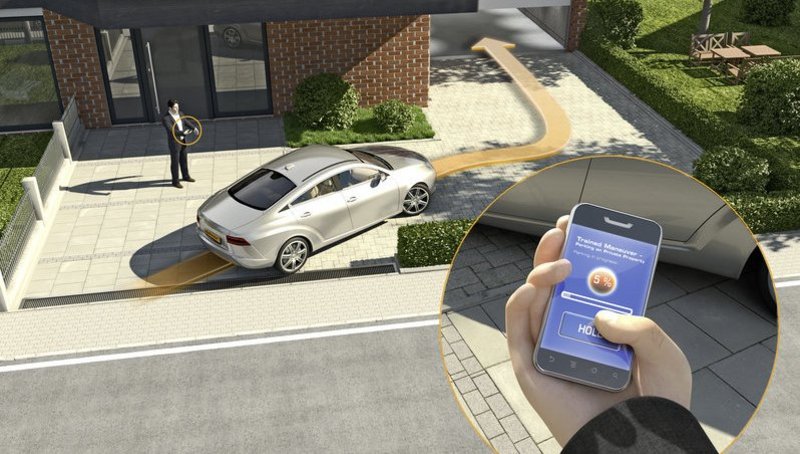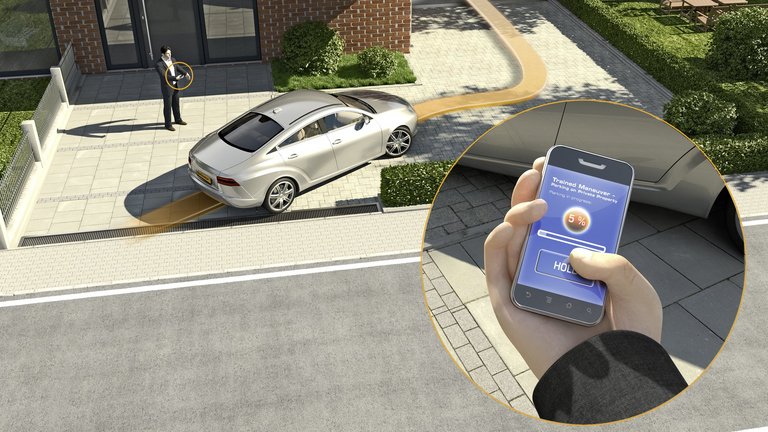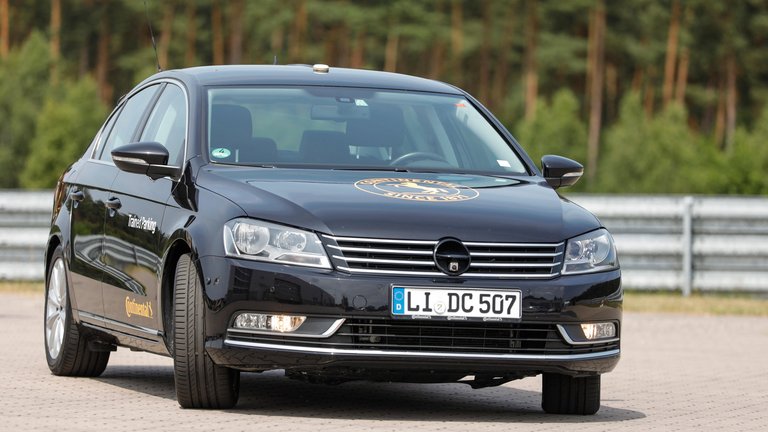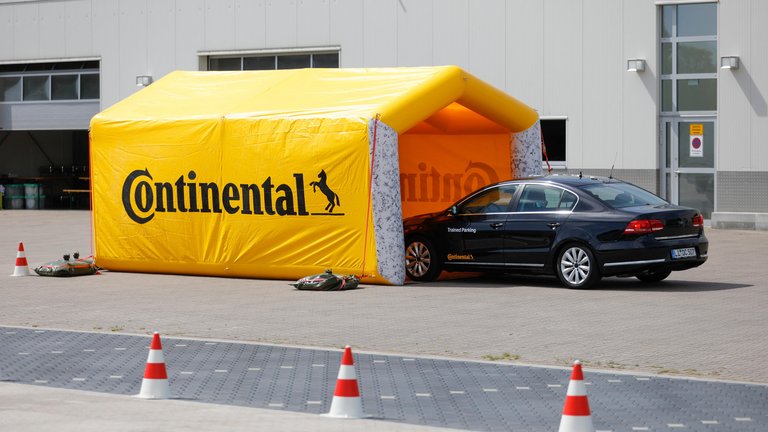Driving Lessons for Cars: Continental Teaches Vehicles to Park Independently
- Continental uses automated driving technology to provide vehicles with a “memory” for recurring parking procedures.
- With Trained Parking, presented as part of the New Mobility World at the IAA in Frankfurt, drivers can teach their vehicle routine parking tasks.
- Once they have been learned, the vehicle can then independently perform parking procedures at the touch of a button.
Frankfurt, Germany, June 29, 2017. Normally, it is people that have to learn how to park their cars – and it is certainly not the most popular task among drivers. Therefore, technology company Continental has developed a solution, which can at least relieve drivers from recurring parking routines. Upon request, the new Trained Parking function records and stores the sequence of a parking procedure. When the procedure is to be repeated, the driver drives the vehicle near where the recording began and, at the touch of a button, the vehicle independently performs the previously learned parking procedure.
“Parking procedures, such as from the house door into the garage, show how effective automation already is in vehicles today,” explained Alfred Eckert, head of Advanced Technology in Continental’s Chassis & Safety division. “When it comes to repeating processes, automation is already unbeatable in terms of reliability. Furthermore, the technology is getting ever better at detecting and handling changing situations.”
For the Trained Parking function, Continental uses sensors already available in the vehicle, such as cameras and radars, to detect the surroundings. “Trained Parking is therefore a good example of how sensor technology in vehicles can efficiently be put to multiple use,” said Eckert. When learning, i.e. the first time the route is driven manually, the system generates a precise map of the surroundings from the sensor data and then stores this map. When the vehicle is in the area covered by this map, it can determine its precise position and automatically drive the learned route. The driver can exit the vehicle before activating the parking procedure as the vehicle parks without driver assistance. In doing so, Trained Parking not only relieves the driver from a tedious routine, but it also allows vehicles to park in tight spaces in parking garages without the driver having to stress about getting out.
Making frequently used routes and parking procedures more convenient
Trained Parking will be available in two versions. The variant that will be presented as part of New Mobility World (Agora, between halls 3 and 4, from September 13 to 24) at the IAA in Frankfurt is partially automated and still requires supervision by the driver. It works according to the dead-man’s switch principle, meaning that the function is only active as long as the driver continues to press a button on a key or mobile phone. This is expected to be in series production in 2020. The next development step is the fully automated variant, which does not require any driver supervision.
Using Trained Parking, the car records all 360 degrees of its surroundings using the standard sensors installed in the vehicle. This includes short-range radars and surround-view cameras but other sensor technologies, such as LiDAR, can also be used. “On the one hand, the camera offers the widest range of possibilities for vehicle surroundings monitoring, but it is also more sensitive to environmental influences. This in particular is why the combination with a second type of sensor is required for a fully automated variant,” said Benedikt Lattke, project leader for driver assistance systems and automation in the Advanced Technology department of the Chassis & Safety division.
If drivers want to teach their vehicle a parking procedure, they activate learn mode. The vehicle then begins recording its position and the sequence of the parking procedure on a map of the surroundings. “Next time the driver wants to park their car at the same place, the vehicle verifies its position using this learned map and repeats the learned parking procedure,” says Lattke. Depending on how much memory is available, a Trained Parking system can store several parking routines, each up to several hundred meters in length. The parking procedure can also be reversed for the car to drive out of the parking space.
Changes in the surroundings are detected
Naturally, the vehicle observes all 360 degrees of its surroundings during every parking procedure. If an obstacle is detected, such as a forgotten trash can, the vehicle will drive around this automatically, if possible. In the case of moving objects, such as playing children, the vehicle will stop. It will only continue with the parking procedure once its surroundings are free of obstacles again.

Sören Pinkow
Media Spokesperson Autonomous Mobility and Commercial Vehicles
Continental Automotive



